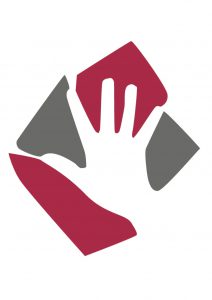DUPUYTREN’S CONTRACTURE
Dupuytren’s disease is the thickening, with subsequent shortening of the layer under the skin called the fascia. The fascia is a structural layer that protects the underlying nerves and blood vessels but also attaches to the overlying skin giving it stability. This disease is often misunderstood to be thickening of the tendons, however this is not the case as the tendons lie below the fascia.
WHAT CAUSES IT?
This disease is often seen in individuals of Northern European Descent and can run in families. There are a number of other associations including Diabetes, excessive alcohol consumption and epilepsy. It generally affects men more than women.
WHAT ARE THE SIGNS AND SYMPTOMS?
The disease starts with thickenings in the palm that progressively develop into strands leading into the fingers. The fingers can gradually be pulled towards the palm making it impossible to straighten them. This often presents with difficulty with washing, wearing gloves and shaking hands. The little and ring fingers are the most commonly affected. In more severe cases the thickening (nodules) may be present over the back of the finger joints (Garrod’s pads), the arch of the feet (Ledderhose disease) and the penis (Peyronie’s disease) in gentlemen.
HOW IS IT DIAGNOSED?
The diagnosis is established with a detailed history and examination. It is unusual to require any specialist tests.
HOW IS IT TREATED?
At this moment in time there is no cure for the disease and the treatment is aimed at improving hand function by attempting to get the finger(s) straighter. The disease does however progress at different rates in different individuals. For a mild deformity that is not increasing, no treatment is required. For progressive deformities and those that are severe, surgery may well be necessary.
There are two intermediate options. The first of these is an injection (Collagenase) that weakens the thickenings in the palm, allowing the finger to be straightened on a second appointment 24 to 48 hours later. Unfortunately this injection is currently unavailable in the UK due to a worldwide supply shortage. The second procedure that is also performed in clinic is a needle fasciotomy where the thickening is released under local anaesthetic using a needle.
WHAT DOES THE OPERATION INVOLVE?
The aim of surgery is to remove the diseased tissue from the palm and finger to allow the finger(s) to be straightened. This is performed as a day case procedure under a general anaesthetic. The surgery can last anywhere between 30 minutes and 2 hours depending on the severity of the disease and the number of digits involved. In some cases it may be necessary to remove the skin along with the diseased fascia (dermofasciectomy) and to then cover the defect with a skin graft from the forearm. This is generally reserved for the most severe cases or in individuals where the contracture has returned after previous surgery.
AFTERCARE
Following the operation you will normally have a bulky dressing covering your wound. The wound is checked at 48 hours and dressed until 10 days when the stitches will be removed. You will normally see the hand therapist in the first week to be fitted with a custom-made splint. This is to wear for four months just at night. This is to prevent the finger from bending in again whilst the scar matures.
RETURN TO WORK
This depends on the nature of your work. For a sedentary occupation the time off is normally 2 weeks. For a manual occupation this can be as long as 6 weeks, however it can take as long as 3 months to reach full capacity again.
DRIVING
It is recommended that you do not drive until the stitches have been removed at 10 days.
RETURN TO SPORT
This depends on the intensity of the sport but in most cases a return by 6 weeks is the norm. However more physically demanding sports can require as much as 3 months off.
COMPLICATIONS
Like with any surgery there are a number of small risks associated with this operation.
Infection (1%) is a risk with all surgery. In the majority of cases these are infections around the wound and can be treated with a course of antibiotics. The more unusual deep-seated infections however can require admission to hospital and surgery to clean the wound out if necessary.
Swelling and Stiffness can remain for many months following surgery. It is important to elevate the limb and keep all joints that are not immobilised with a splint, active.
Scar Sensitivity is often a problem with surgery in the hand, particularly the palm. This is often self-limiting and daily massage of the scar can shorten the duration of the symptoms. The sensitivity does settle is all cases with time.
Nerve Injury is a potential but very rare risk with this surgery. Often the nerves at greatest risk are the nerves supplying feeling to the corresponding digit. In most cases the feeling normally recovers with time, however when the nerve is cut, it can leave you with permanent numbness on one side of the finger.
Recurrence is a genuine problem in Dupuytren’s disease as we have no treatment for the underlying disease process. As a general rule, those requiring treatment for the first time over the age of 60 years are less likely to need further surgery on the same finger. The disease can however affect other digits or the other hand. Surgery for recurrent disease is possible but is often more involved and requires a greater period of rehabilitation.
Complex Regional Pain Syndrome is an extremely rare (1%) complication that can follow any injury or surgery to a limb. In this situation the nerves in the arm over-react to the point where the hand becomes very painful, swollen and sensitive. This condition does improve with time but can be problematic for many months (see section on Complex Regional Pain Syndrome).
